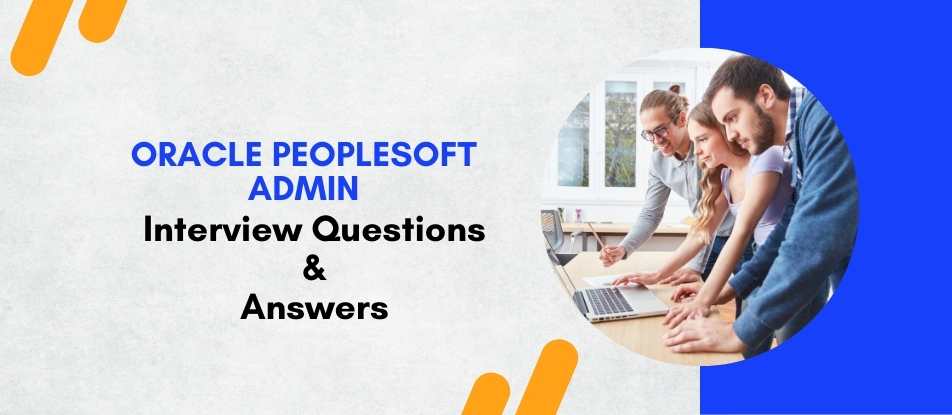
This specialized course equips administrators with the skills needed to manage and optimize Oracle PeopleSoft environments effectively. Participants will delve into architecture, security, performance tuning, and system maintenance, gaining hands-on experience in managing instances, applying patches, and integrating with other systems. Suitable for IT professionals aiming to enhance their administrative capabilities, this training prepares you for real-world challenges in PeopleSoft administration.
Oracle PeopleSoft Admin Interview Questions Answers - For Intermediate
1. How do you perform troubleshooting in PeopleSoft?
Troubleshooting in PeopleSoft often involves checking log files, reviewing server configurations, analyzing SQL traces, and utilizing debugging tools in PeopleTools to identify and resolve issues.
2. What is the purpose of the delivered auditing features in PeopleSoft?
The auditing features in PeopleSoft are designed to track changes to critical data. They help maintain compliance with internal and external regulations by logging who made changes to the data, along with the date and time of the changes.
3. What is SQR and what are its uses in PeopleSoft?
SQR (Structured Query Report) is a programming language used in PeopleSoft for generating complex reports from the database. It is highly efficient for data processing and formatting reports.
4. What is PeopleSoft Integration Broker?
The Integration Broker in PeopleSoft is a middleware technology that facilitates communication between PeopleSoft and other systems. It supports various protocols like HTTP, SOAP, and REST for integrating with external applications.
5. How do you manage user sessions in PeopleSoft?
User sessions in PeopleSoft are managed through the web server, which uses session cookies to track each user's interaction with the application. Administrators can also monitor and manage active sessions using the online administration pages.
6. Explain the concept of Effective Dating in PeopleSoft.
Effective Dating allows multiple versions of data to be maintained over time. This feature enables users to see historical data, current data, and future data within the same table, providing a comprehensive view of information changes over time.
7. Describe the rollback process in a PeopleSoft environment.
Rollback in PeopleSoft refers to the process of undoing transactions that have not been committed to the database. This is crucial in maintaining data integrity in the event of an error or interruption during data processing.
8. What are Menu Definitions in PeopleSoft?
Menu Definitions in PeopleSoft define the structure and navigation of the application. They determine how menus and pages are organized in the system, facilitating user access to various components.
9. How is caching used in PeopleSoft?
Caching in PeopleSoft improves performance by storing frequently accessed data in memory. This reduces the need to retrieve data from the database for each transaction, speeding up response times.
10. What is a Record Definition and how is it used in PeopleSoft?
A Record Definition in PeopleSoft defines the structure of a database table. It specifies fields, their data types, and other attributes. Record Definitions are used to build forms, store data, and link various parts of the application.
11. Discuss the deployment of web services in PeopleSoft.
Web services in PeopleSoft are deployed using Integration Broker, which provides the tools to create, publish, and consume SOAP and RESTful web services. This enables seamless integration with other web-based systems.
12. Explain the purpose of the Translate Table in PeopleSoft.
The Translate Table is a prompt table that stores small sets of codes and their associated meanings. It is used to maintain data consistency and to provide dropdown lists and lookup functionality within the application.
13. What are Dynamic Roles and how are they used in PeopleSoft?
Dynamic Roles in PeopleSoft are roles assigned to users based on certain criteria or business rules, rather than being statically assigned. This allows for automatic role adjustments based on changes in user data or actions.
14. How are PeopleSoft projects migrated between instances?
PeopleSoft projects are migrated between instances using the Application Designer. Projects can be packaged with all related objects and moved from development to testing or production environments.
15. What are the best practices for maintaining PeopleSoft performance?
Maintaining PeopleSoft performance involves regular monitoring of system resources, optimizing SQL queries, utilizing appropriate indexing, managing batch processes efficiently, and ensuring that the application servers and databases are properly tuned.
Oracle PeopleSoft Admin Interview Questions Answers - For Advanced
1. How do you manage PeopleSoft instances across multiple geographies?
Managing PeopleSoft instances across multiple geographies requires a strategy that includes localized configurations to meet regional requirements while maintaining centralized governance. Techniques such as deploying regional application servers and databases can help reduce latency and improve user experience. Data synchronization must be carefully managed to ensure consistency across instances, using technologies like database replication. Additionally, regulatory compliance for data in different countries needs to be considered, with appropriate data handling and privacy measures implemented.
2. What are the key considerations when configuring PeopleSoft for high availability?
Configuring PeopleSoft for high availability involves ensuring that all critical components of the PeopleSoft architecture, such as the web servers, application servers, and database servers, have redundancy and failover capabilities. Load balancing should be set up to distribute the workload evenly and prevent any single point of failure. Regular testing of the failover mechanisms is crucial to ensure they activate properly during an outage. Backup systems should be robust and tested frequently to ensure data can be restored quickly and accurately.
3. Discuss the role of PeopleSoft nVision for financial reporting and its configuration.
PeopleSoft nVision is a powerful reporting tool used primarily for financial reporting. It leverages Excel as its presentation layer, providing financial professionals with a familiar environment to generate sophisticated, customizable financial statements directly from PeopleSoft data. Configuring nVision involves setting up tree managers, layouts, and scope definitions to manage the data hierarchy and reporting structures effectively. Performance tuning, such as setting up appropriate indexing and running reports in batch mode, can enhance the tool's efficiency and output.
4. Explain how PeopleSoft handles transaction logging and auditing.
PeopleSoft handles transaction logging and auditing through various mechanisms designed to track and store changes made within the system. This includes detailed audit trails that can record data changes at the field level, user login/logout activities, and other significant events. Configuring auditing requires enabling audit record definitions within the application designer and associating them with specific tables or fields that require monitoring. These logs are vital for compliance with internal controls and external regulations.
5. What strategies can be used for efficient PeopleSoft update and patch testing?
Efficient strategies for PeopleSoft update and patch testing include using automated testing tools to simulate workloads and user interactions to identify any potential issues introduced by the updates. Creating a dedicated testing environment that mirrors the production system as closely as possible ensures that tests accurately reflect real-world use. Engaging end-users in the testing process during the user acceptance testing phase can also provide valuable insights into the practical impact of updates and help refine the deployment strategy.
6. How can PeopleSoft administrators ensure system scalability?
Ensuring system scalability in PeopleSoft involves planning for future growth in user base and data volume. This can be achieved by implementing scalable server architectures, optimizing application performance, and utilizing cloud technologies for elastic computing resources. Database sharding or partitioning can also be employed to manage large datasets more effectively. Regular performance reviews and capacity planning sessions are critical to anticipate scalability needs and make necessary adjustments to the infrastructure.
7. Describe the implications of cloud migration for PeopleSoft environments.
Cloud migration for PeopleSoft environments offers several benefits, including scalability, flexibility, and potential cost reductions. However, it also comes with challenges such as data security, compliance with data sovereignty laws, and potential performance issues due to network latencies. Migrating to the cloud requires a thorough assessment of the current infrastructure, careful selection of a cloud provider who can meet the organization's specific requirements, and meticulous planning to ensure a smooth transition while minimizing downtime.
8. What are the best practices for securing PeopleSoft interfaces?
Securing PeopleSoft interfaces involves implementing strong authentication mechanisms, such as two-factor authentication, securing all communications with SSL/TLS, and conducting regular security assessments to identify and mitigate vulnerabilities. Role-based access controls should be strictly enforced, and regular audits performed to ensure that only authorized users have access to sensitive data. Additionally, customizing and hardening the web server configurations can protect against common web vulnerabilities.
9. How is data privacy managed in PeopleSoft?
Data privacy in PeopleSoft is managed by implementing comprehensive data access controls, encrypting sensitive data both at rest and in transit, and adhering to privacy laws and regulations such as GDPR or HIPAA. Privacy features within PeopleSoft allow for the masking of personal data and setting privacy flags on sensitive fields to prevent unauthorized access. Regular training on data privacy policies and procedures for all users is also crucial to prevent accidental data breaches.
10. Discuss the complexities of integrating PeopleSoft with other Oracle products.
Integrating PeopleSoft with other Oracle products, such as Oracle Fusion Middleware or Oracle Database, can enhance functionality but also introduce complexities. These integrations often require deep technical knowledge of both systems to ensure seamless data flow and functionality. Issues such as version compatibility, data mapping, and maintaining transaction integrity must be addressed. Using standardized integration frameworks provided by Oracle can help in reducing these complexities by providing pre-built connectors and methodologies.
11. Explain how PeopleSoft's PeopleCode is used to extend system functionalities.
PeopleCode is a proprietary scripting language used in PeopleSoft to add logic to pages, records, and other components. It allows administrators and developers to create custom business processes, validate user input, integrate with external systems, and modify existing functionalities without altering the underlying database structure. PeopleCode is tightly integrated into the PeopleSoft architecture, enabling it to interact with almost all aspects of the application.
12. What are the challenges and solutions in managing PeopleSoft licensing compliance?
Managing PeopleSoft licensing compliance involves ensuring that the organization is using the software within the terms agreed upon in the license contract. Challenges include tracking the number of active users, managing access to licensed modules, and ensuring compliance across multiple environments. Solutions include implementing license management tools to monitor usage patterns, conducting regular reviews of user access levels, and working closely with Oracle to ensure compliance and renegotiate terms as necessary.
13. Discuss the role and configuration of PeopleSoft Fluid User Interface.
The PeopleSoft Fluid User Interface is designed to provide a responsive, modern user experience across various device types, including mobile devices. Configuring the Fluid UI involves designing layouts and pages that adapt to different screen sizes and orientations, utilizing the Fluid development tools provided by PeopleSoft. This approach enhances usability and accessibility, particularly for mobile users, and involves careful planning to ensure that the UI remains consistent and functional across platforms.
14. How can PeopleSoft be optimized for global operations?
Optimizing PeopleSoft for global operations involves configuring the system to handle multiple currencies, time zones, and languages, ensuring compliance with international regulations and reporting standards. Scalability solutions such as global instance architectures can help manage large, distributed user bases effectively. Additionally, deploying regional centers of excellence for support and development can ensure that local needs and challenges are addressed promptly and efficiently.
15. What advanced reporting techniques are available in PeopleSoft and how are they implemented?
Advanced reporting techniques in PeopleSoft include using XML Publisher for generating complex, formatted reports that can be distributed in multiple formats, such as PDF, HTML, or Excel. Implementing these techniques involves defining data sources within PeopleSoft, designing templates using tools like BI Publisher, and configuring the distribution process to automate report generation and delivery. Additionally, integrating PeopleSoft with business intelligence platforms can provide deeper insights through data analytics and visualization tools.
Course Schedule
| Dec, 2025 | Weekdays | Mon-Fri | Enquire Now |
| Weekend | Sat-Sun | Enquire Now | |
| Jan, 2026 | Weekdays | Mon-Fri | Enquire Now |
| Weekend | Sat-Sun | Enquire Now |
Related Courses
Related Articles
Related Interview
Related FAQ's
- Instructor-led Live Online Interactive Training
- Project Based Customized Learning
- Fast Track Training Program
- Self-paced learning
- In one-on-one training, you have the flexibility to choose the days, timings, and duration according to your preferences.
- We create a personalized training calendar based on your chosen schedule.
- Complete Live Online Interactive Training of the Course
- After Training Recorded Videos
- Session-wise Learning Material and notes for lifetime
- Practical & Assignments exercises
- Global Course Completion Certificate
- 24x7 after Training Support


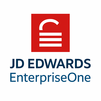




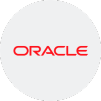
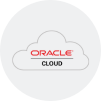
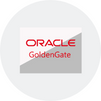

 Join our Live Instructor-Led online classes delivered by industry experts
Join our Live Instructor-Led online classes delivered by industry experts